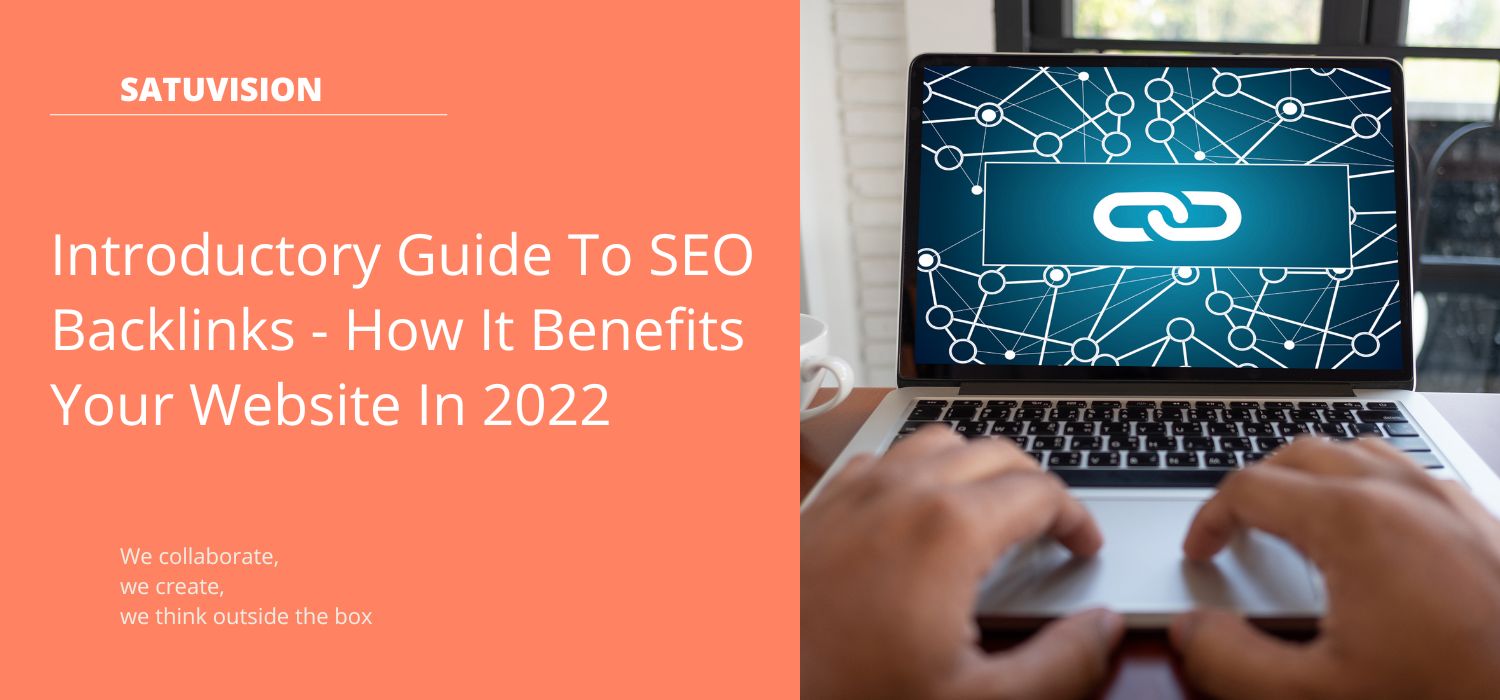Table of Contents
- What is a backlink?
- How can backlinks benefit your website?
- Elements of a good backlink
3.1 High Authority Score
3.2 High Relevancy
3.3 Organic
3.4 Appropriate Anchor Text - Elements of a bad backlink
4.1 Blackhat or Paid Links
4.2 Irrelevant Links - Dofollow vs Nofollow Backlink
- Managing Your Backlinks
- Getting More Backlinks & Link Building
- Conclusion
What is an SEO Backlinks?
SEO backlinks are hyperlinks from another website to yours. In other words; when users click on an anchor text with your hyperlink on their website, it will take the user to your website. The term inbound links and backlinks are often interchangeably used.
How can backlinks benefit your website?
Backlinks are one of the top-ranking factors for a website in many search engines.
Why is this the case? Quality.
As an example, Google wants to deliver relevant & quality search results to its user. Google sees backlinks as endorsements. If trustworthy websites with high authority scores refer to your website, there is a good possibility that your website is also trustworthy.
Key points: We recommend prioritizing getting high-quality backlinks (such as a domain with a high rating) compared to getting a lot of low-quality ones!
Elements of a good backlink
Here are some of the elements to identify a good backlink:
1. High Authority Score
2. High Relevancy
3. Organic
4. Appropriate Anchor Text
High Authority Score
Did you notice that we mentioned authoritative websites on the key points? Quality over quantity! In SEO, an authoritative website means a trusted source that provides users with accurate information. Free tools such as Moz (a great tool!) allow users to check the authoritativeness of a website (Domain Authority).
High Relevancy
A backlink from a website that is topically related to your website is better for your website’s SEO. Search engines can identify website content from basic signals such as keywords. For example, if you are running a website for a hotel, a backlink from a mining website has a lower weight (in terms of relevancy) compared to a travel website.
Organic
Organic backlinks can be defined as inbound links that you received naturally. Search engines such as Google often give penalties to websites that pay to get backlinks. If Google identifies a lot of spammy backlinks on your website, your website may get penalized which negatively affects your rankings. This is why managing your backlinks’ health is so important. To get organic backlinks, you must provide rich & powerful content.
Appropriate Anchor Text
As we mentioned earlier, search engines can identify keywords to determine topical content. This means a descriptive anchor text is better compared to short anchor texts such as here or click here. Some of the reasons behind this are to prevent websites from using spammy links (therefore spammy anchor texts) and descriptive anchor texts are friendlier to users/readers.
Tips: Make sure backlinks are dofollow!
Elements of a bad backlink
Here are some of the elements to identify a bad backlink:
1. Blackhat or Paid Links
2. Low Relevancy
Blackhat or Paid Links
Unnatural backlinks can be anything that is manipulative or artificial (also known as blackhat link-building strategies). It can be very tempting to buy links because there are so many sellers out there. Do not cheat your way! Google developed the Google Penguin Update in 2012 to combat black hat link-building strategies.
Irrelevant Links (Toxic Links)
The main goal of having a backlink from a relevant domain/web page is that it may reach readers that have the potential to become your new client. Similarly to paid links, search engines may identify your website as spammy if your website has plenty of backlinks from low authority & irrelevant domains. In fact, a backlink from a high domain authority website that is not related to your business may be seen as irrelevant by some search engines.
Tips: Remove your website’s backlink health by removing spammy backlinks by contacting the webmaster or using Google Search Console Disavow Tool
Also read: The Dangers of Using Black Hat SEO in Your Business
Dofollow vs Nofollow Backlink

Dofollow & Nofollow are HTML codes that give commands to a search engine’s spider bot to crawl or not to crawl a hyperlink. All links are Dofollow, to begin with, adding the code rel=’nofollow’ will convert Dofollow links into Nofollow.
Here is an example of a Dofollow link:
<a href=”https://www.satuvision.com/”>SatuVision</a>
Here is an example of a Nofollow link:
<a href=”https://www.satuvision.com/” rel= “nofollow”>SatuVision</a>
It is important for your backlink to be a Dofollow. This is because link authority may only pass from a Dofollow link. A Nofollow link is telling web crawlers that you are not associated with that website.
The bright side of a Nofollow link is that traffic may still pass. Website visitors can still click on a Nofollow link and that click may bring a potential client. However, a Dofollow link is necessary to increase the domain authority of your website and to increase rankings on Search Engines Result Pages (SERP).
Managing Your Backlinks
Google Search Console is a solid tool to inspect your backlinks. Inside the ‘Links’ tab, you can inspect your website’s top External Links, Internal Links, and Anchor Texts. Subscription tools such as SEMRush & Ahrefs can be very helpful.
Getting More Backlinks & Link Building
As we mentioned earlier, to acquire backlinks organically, you are required to produce great-quality content. For example, a content creator may find your article helpful and link their content to your article.
Another way of acquiring backlinks is to get them manually, this method is called Link Building.
There are so many effective ways of Link Building. Here are two methods we recommend:
Guest Posting: publishing articles on another entity’s website.
We recommend publishing on websites that have a similar niche to your business or are from the same industry.
Broken Link Building: The first step is to look for broken links on websites that have a similar niche to your business or are from the same industry. Secondly, contact and offer the owner of that website to remove the broken link and link yours instead (with similar, related, or better content).
Also read: Tips & Strategy to Increase Your Website SEO Ranking
In Conclusion
Managing backlinks is one of the most important off-page SEO things you can do to improve website rankings and domain authority. One quality backlink can be worth many times more compared to several low-medium quality backlinks combined. Remember to always follow search engine guidelines and not cheat your way to the top!





